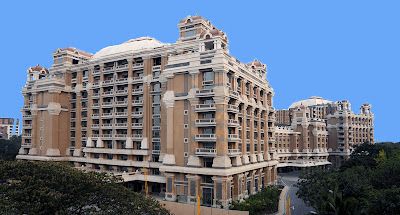Today Asia accounts for 40%
of the world shipping tonnage. Since 2000, Asia has been the fastest-growing
source of foreign direct investment (FDI). Its businesses currently produce a
quarter of the world’s exports (US$3.77 trillion in 2010) and form 87 of the
Fortune Global 500 largest firms.
Positive Factors aiding growth of sea ports, economy and
real estate
Trade
flows from Asia to the US and Canada, the Middle East, Latin America and Africa
are expected to increase by over 10% a year up to 2020. Intra-regional trade is
expanding rapidly, reflecting the shift towards higher consumption in Asia.
China leads the way in terms of outflows and destination, with growth for
Indonesia, South Korea, Thailand and Vietnam close behind. Turning to the port
sector, and as two of the “Asian Dragons”, Hong Kong and Singapore have been
the world’s busiest container ports over the last years, with continuously
increased traffic.
No wonder that in Sept 2013,
Singapore the second busiest sea port in the world, decided to double its
capacity after Shanghai became the top sea port in the world. The deepwater
port will eventually have capacity for 65 million standard 20-foot containers a
year, according to Transport Minister Lui Tuck Yew.
As carriers roll out ever
larger ships, terminals from Asia to Europe face the need for deeper ports and
cranes, putting Vizhinjam at the right place at the right time. Over the last
decade the number of Twenty Foot equivalent units in Singapore has grown at the
rate of 5.2% per annum.
To understand the effect
that a sea port has on the GDP of an economy, consider this: The maritime
industry contributes about 7 percent of
gross domestic product of Singapore. That is around 19Bn USD which is
around Rs.10,000 Crore annually. Consider an amount equivalent to even 1/10th
of this being generated in Trivandrum annually and one can estimate the boost
that would come into the economy.
Port Industry and Employment Outlook:
Basically, the “port
industry” includes the loading and unloading of goods in a harbor area, but it
can be enlarged to the whole logistics chain (including production, forwarding
and storage) concerned with the goods carried by ocean vehicles.
The arrival of a sea port
brings with it jobs and money to the local market. Employment is also likely to
keep pace with the cluster's growth. Jobs in-demand could range from shipping
officers to marine superintendent.
Future Prospects
If everything goes as per
plan and the Vizhinjam sea port begins operations in 2018, the Trivandrum economy
will see a major uptick with increase in number of industries, service
companies, jobs and eventually see an acceleration in real estate prices.
For more on Trivandrum real estate you can reach us at www.nandanamconsultants.in








